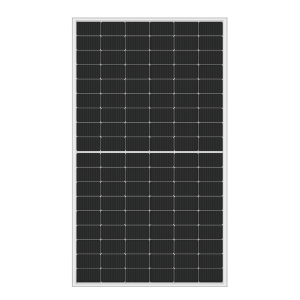The Science of Solar Modules
Time of Release : 2023-09-09
Introduction
Solar energy has emerged as a promising solution to meet our increasing energy demands while minimizing environmental impact. Central to solar power generation are solar modules, which convert sunlight into electricity. Understanding the science behind solar modules is key to optimizing their efficiency and harnessing the full potential of solar energy. In this article, we delve into the fundamental principles and advancements in solar module technology.

Photovoltaic Effect
Solar modules operate on the principle of the photovoltaic effect. Photons from sunlight strike the solar cells within the module, exciting electrons and creating an electric current. This direct conversion of light energy into electrical energy is the foundation of solar power generation.
Solar Cell Technologies
a. Crystalline Silicon Cells: Crystalline silicon solar cells dominate the market due to their high efficiency and reliability. Monocrystalline and polycrystalline silicon cells are the two main types. Monocrystalline cells are made from a single crystal structure and have higher efficiency, whereas polycrystalline cells consist of multiple crystal structures and are more cost-effective.
b. Thin-Film Cells: Thin-film solar cells are made by depositing thin layers of semiconductor materials onto a substrate. This technology offers flexibility, lower production costs, and wider application possibilities. Amorphous silicon, cadmium telluride (CdTe), and copper indium gallium selenide (CIGS) are commonly used thin-film materials.
Efficiency Enhancement
Improving the efficiency of solar modules is crucial for maximizing power generation. Several techniques are employed for efficiency enhancement:
a. Anti-Reflective Coatings: Coatings are applied to solar cells to reduce reflection and increase light absorption, thereby enhancing overall efficiency.
b. Passivation Layers: These layers minimize surface recombination and improve charge carrier lifetime, resulting in increased efficiency.
c. Back-Surface Field: By creating a back-surface field, charge carrier collection is improved, enhancing module efficiency.
d. Tandem Cells: Tandem or multijunction cells combine different semiconductor materials with varying bandgaps to capture a broader range of the solar spectrum, increasing overall efficiency.
Module Design and Integration
Apart from solar cell technologies, the design and integration of solar modules play a crucial role in their performance and durability. Factors like module size, layout, interconnectivity, and encapsulation materials all impact the overall efficiency and reliability of the system.
Beyond Traditional Solar Modules
Advancements in solar technology are continuously being made to increase efficiency and expand application possibilities:
a. Bifacial Solar Modules: Bifacial modules can capture sunlight from both sides, increasing energy generation by utilizing reflected and diffused light.
b. Tandem Solar Cells: Tandem solar cells stack multiple layers of photovoltaic materials, each absorbing different parts of the solar spectrum. This approach increases efficiency and reduces cost.
c. Perovskite Solar Cells: Perovskite materials have gained significant attention due to their high efficiency potential and low fabrication costs. Ongoing research aims to commercialize perovskite solar cells.
Conclusion
Understanding the science behind solar modules is vital for optimizing solar power generation. Through advancements in solar cell technologies, efficiency enhancement techniques, and innovative module designs, we can harness the full potential of solar energy. As continued research and development drive the evolution of solar technology, solar modules will play an increasingly significant role in our transition towards a sustainable and clean energy future.





